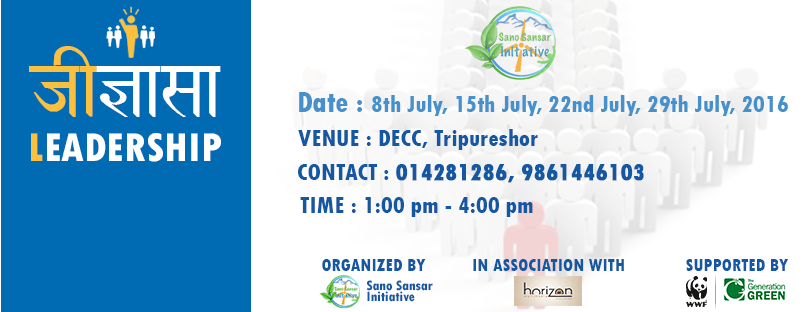FAQs on Green Economy
- How is a green economy defined?
For the purposes of the Green Economy Initiative, UNEP has developed a working definition of a green economy as one that results in improved human well-being and social equity, while significantly reducing environmental risks and ecological scarcities. In its simplest expression, a green economy can be thought of as one which is low carbon, resource efficient and socially inclusive.
Practically speaking, a green economy is one whose growth in income and employment is driven by public and private investments that reduce carbon emissions and pollution, enhance energy and resource efficiency, and prevent the loss of biodiversity and ecosystem services. These investments need to be catalyzed and supported by targeted public expenditure, policy reforms and regulation changes. This development path should maintain, enhance and, where necessary, rebuild natural capital as a critical economic asset and source of public benefits, especially for poor people whose livelihoods and security depend strongly on nature.
- How is a green economy measured?
A wide range of indicators can help measure the transition towards a green economy. UNEP is working with partners such as the OECD and the World Bank to develop a suite of indicators – primarily building on existing frameworks – which governments will be able to choose from depending on their national circumstances, such as the structure of their economy and their natural resource endowment. The indicators being developed can be roughly divided into the following three groups:
Economic indicators: for example, share of investments or the share of output and employment in sectors that meet a sustainability standard, such as green GDP.
Environmental indicators: for example, resource use efficiency or pollution intensity at either the sectoral or economy-wide level, for example, energy use/GDP, or water use/GDP
Aggregate indicators of progress and well-being: for example, macroeconomic aggregates to reflect natural capital depreciation, including integrated environmental and economic accounting, or broader interpretations of well-being beyond narrow definitions of per capita GDP.
- How does a green economy contribute to sustainable development?
Sustainable development has been defined as ìdevelopment which meets the needs of the present without compromising the ability of future generations to meet their own needs.î It gained international attention in the late 1980s following the Brundtland Commission’s landmark report, ìOur Common Futureî, and further prominence at the 1992 Earth Summit where it served as a guiding principle for international cooperation on development. Achieving sustainable development requires the advancement and strengthening of its three interdependent and mutually reinforcing pillars: environmental protection, social development, and economic development.
Moving towards a green economy can be an important driver in this effort. Rather than being seen as a passive receptor of wastes generated by economic activity or as one of many substitutable factors of production, the environment in a green economy is seen as a determining factor of economic production, value, stability, and long term prosperity – indeed, as a source of growth and a spur to innovation. In a green economy, the environment is an ìenablerî of economic growth and human well-being. Additionally, since the poor are most dependent on the natural resource base for their livelihoods and least able to shield themselves from a degraded environment, movement towards a green economy also promotes equitable growth.
As such, the shift to a green economy can be seen as a pathway to sustainable development, a journey rather than a destination. The nature of a ëgreen economy’ sought after by a developed or developing nation can vary greatly, depending on its geographical confines, its natural resource base, its human and social capital, and its stage of economic development. What does not change however are its key tenets – of targeting improved human well-being and social equity, whilst reducing environmental risks and ecological scarcities.
- How does a green economy help eradicate poverty?
Today’s economic wealth, as traditionally defined and measured through GDP, is often created through the overexploitation and pollution of our ìcommonî natural resources, from clean freshwater to forests to air essential to our very survival. This type of economic growth, as traditionally defined, has resulted in high economic and social costs, especially for the poor who depend on these resources for their livelihoods and are especially vulnerable to environmental contamination and degradation. The current unprecedented loss of biodiversity and ecosystem degradation is affecting sectors such as agriculture, animal husbandry, fishing and forestry – the very sectors which many of the world’s poor depend on for their livelihoods.
Equally important, the move towards a green economy aims to increase access to basic services and infrastructure as a means of alleviating poverty and improving overall quality of life. This includes, for example, providing energy access to the 1.4 billion people who currently lack electricity, and another 700 million who are deprived of modern energy services. Renewable energy technologies, such as solar and wind power, and supportive energy policies promise to make a significant contribution to improving living standards and health in low income areas, particularly to those that currently lack access to energy.
Finally, significant opportunities exist to discontinue and redirect environmentally harmful subsidies. For instance, governments around the world are currently spending an estimated US $700 billion annually to subsidize fossil fuels. This represents five times the amount of money countries worldwide spend on development assistance. The largest part of these subsidies is being allocated by governments of developing countries, in an effort to cushion the shock of price increases on the poor. Yet, many studies have shown that fossil fuel subsidies are inefficient in targeting the poor, and are often benefit disproportionately higher income groups. Removing or dismantling environmentally harmful subsidies and replacing them with more targeted support, such as cash transfers, can increase social protection goals while easing fiscal constraints and improvement environmental outcomes.
- How are the concepts of sustainable consumption and production and green economy related?
Green economy and sustainable consumption and production represent two sides of the same coin. They both share the same objective of fostering sustainable development, covering macro to micro-economic dimensions of public policy and regulation, business operations and social behaviour. Sustainable consumption and production is primarily focused on increasing resource efficiency in production processes and consumption patterns. Complementing this, green economy activities consider macro-economic trends and regulatory instruments governments can pursue through economic and other policies to promote economic growth and job creation that meets the criteria of being green and decent.
In practice, work towards achieving a green economy and sustainable consumption and production are mutually supportive, covering macro and micro interventions that require change in policy and regulatory instruments, investment and business operations, as well as behavioural change in society.
Both are currently high on the international agenda. The 10-Year Framework of Programmes on Sustainable Consumption and Production (the 10 YFP) is one of the key themes of the Commission on Sustainable Development’s (CSD) agenda, developed as a consequence of the World Summit on Sustainable Development (2002). Constructing a green economy in the context of sustainable development and poverty eradication is one of the two central themes of the UN Conference on Sustainable Development (Rio+20) that will take place in 2012. It was recognized at CSD 18 that the 10 YFP could be an important input to the UNCSD, serving as a key building block for the transition to a green economy.
- How does a green economy support employment?
A green economy creates jobs in a wide range of sectors of the economy as new markets emerge and grow, such as in organic agriculture, renewable energy, building retrofits for energy efficiency, public transportation, reclamation of brown-field sites, and recycling, among others.
Decent jobs, with high labour productivity as well as high eco-efficiency and low emissions, hold the promise to provide rising incomes, spur growth and help to protect the climate and the environment. Such green jobs already exist and some have seen high growth, for example, as a result of investment in energy efficiency.
Nonetheless, to ensure a smooth transition to a green economy, a concerted effort in job creation is necessary. Social policies will need to be developed along with environmental and economic policies. Key issues like investing in new skills needed for a low-carbon global economy and policies to handle the employment adjustments in key sectors like energy and transport will be needed to ensure a smooth transition.
- How does a green economy protect and preserve biodiversity?
The loss of biodiversity has caused some people to experience declining well being, with poverty in some social groups being exacerbated. If that loss continues it may also compromise the long-term ability of ecosystems to regulate the climate and could lead to additional, unforeseen, and potentially irreversible shifts in the earth system and changes in ecosystem services. Furthermore, the ecosystem is the prime provider of a number of raw materials that serve as an engine for economic development. For these reasons, the preservation and protection of ecosystems is at the heart of the green economy agenda and green investments also aim at reducing the negative externalities caused by the exploitation of natural capital.
For instance, investments in the preservation of forests which sustain a wide range of sectors and livelihoods and at the same time preserve 80% of terrestrial species. By boosting investment in green forestry, a green economy agenda would preserve the economic livelihoods of over 1 billion people who live from timber, paper and fiber products, which in their turn currently yield 1% of global GDP (this is far outweighed by the non-market public goods derived from forest ecosystem services)
- What does the green economy offer for developing countries?
Green economy policies can help developing countries attain economic and social gains on several fronts, such as through the deployment of cleaner energy technologies and improved access to energy services; improved resource efficiency through investments in cleaner production approaches; increased food security through the use of more sustainable agricultural methods; and access to emerging new markets for their green goods and services. Improvements in resource efficiency and in diversifying the energy matrix can reduce import bills and protect a country from price volatility in energy markets, while reducing the environmental footprint and associated health costs of economic activity. Of course, each country must assess and evaluate its own resource endowment to determine how to best optimize its opportunities for sustainable economic growth.
As highlighted in UNEP’s recent report, ìDeveloping Countries Success Storiesî, there are a number of ongoing developing country initiatives that are demonstrating a positive benefit stream from specific green investments and policies, and if scaled up and integrated into a comprehensive strategy, could offer an alternative sustainable development pathway, one that is pro-growth, pro-jobs and pro-poor.
- Does a green economy lead to protectionism?
Concerns have been raised that the implementation of a green economy could lead to trade protectionism and conditionalities on development aid. Trade measures encouraging environmentally sustainable practices, including standards, subsidies, public procurement, and market access related measures, are often mentioned as potentially leading to green protectionism. For instance, there is concern that environmental standards, although effective in stimulating markets in sustainable goods and services, can also serve as a barrier to developing country exporters, particularly small and medium sized enterprises, which may lack the necessary resources to meet the standards.
Given this risk, it is essential to find the right balance between safeguarding market access on the one hand, and protecting health and the environment on the other. At the international level, one important means of mitigating this risk is to ensure the substantive participation of developing country actors in relevant standard setting negotiations and processes to ensure the concerns are addressed. At the national level, the formulation of green economy policies needs to consider the potential effects on the trading positions of other countries, especially low-income countries.
- What can governments do to enable a green economy?
There are a number of policies that national governments might consider adopting or strengthening in order to stimulate green investment and enable a green economic transition, ranging from regulatory and economic instruments to public-private partnerships and voluntary initiatives. The relevance and efficacy of a particular policy is often highly dependent on the unique endowments and capacities of the country considering the policy.
One of the most direct ways for governments to promote a green economy is through public finance and fiscal measures. For instance, public expenditure on research and development can be an effective means of stimulating the innovation necessary to transition to a green economy. In many developing countries where access to capital is limited, public investments in a green economy are particularly important. Governments can also lead by example through the use sustainable public procurement efforts that stimulate demand for green products and services.
Additionally, governments can correct for negative externalities by ensuring that prices reflect the actual costs of goods and services, including the environmental costs, which are often not captured by the market. The reform of harmful subsidies, such as many of the fishery and fossil fuel subsidies, and the use of taxation instruments, such as levies on pollution, are key policy interventions available to many governments.
A legal framework that facilitates green economic activity and regulates harmful forms of production and consumption is also necessary. Building the capacity of governments and other stakeholders, as well as promoting actions that increase public support for change, may also be required in the transition to a green economy.
***




